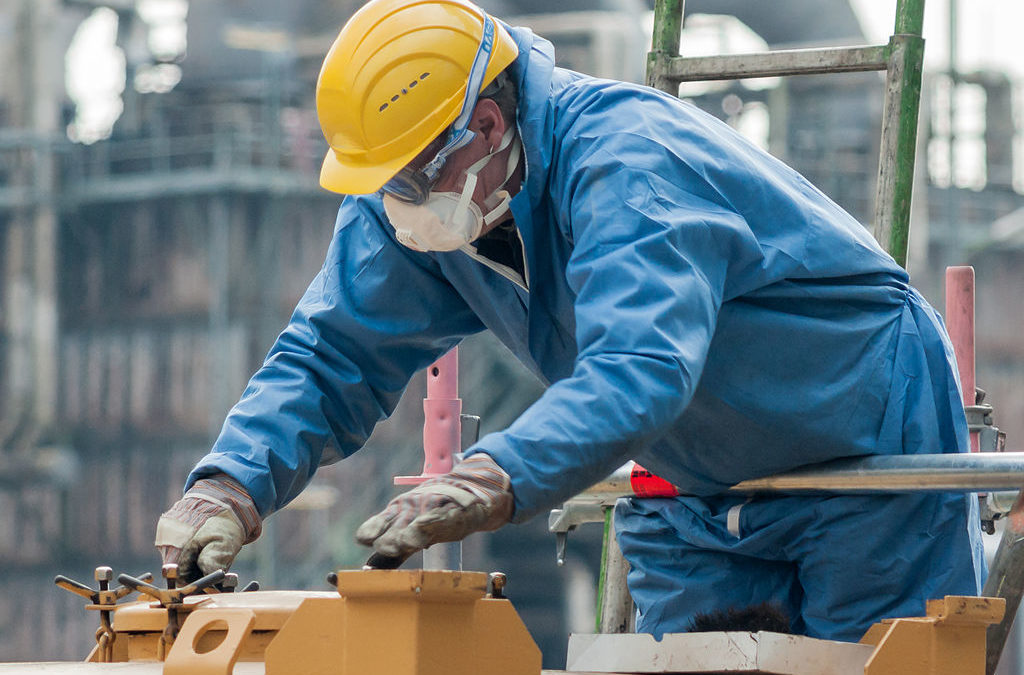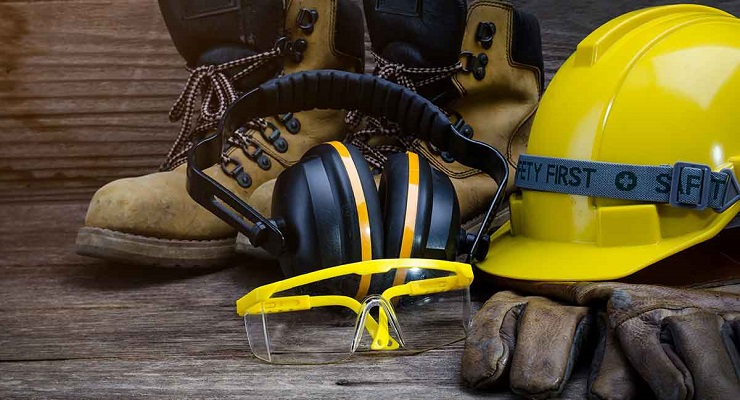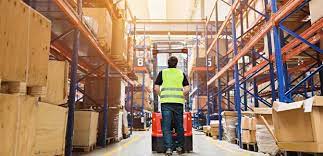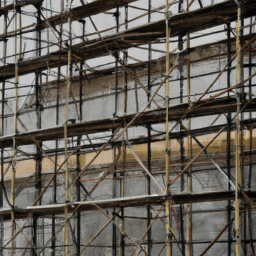Understanding PPE Safety: Types, Uses, and Essential Equipment

Unlocking Safety: The Importance of Modern Process Hazard Analysis (PHA)
January 23, 2025
A Detailed Guide to Safety Signs and Symbols
January 31, 2025Introduction: What Is PPE Safety and Why Is It Important?
PPE safety is a critical aspect of workplace health and safety, focusing on the proper use and maintenance of personal protective equipment. PPE safety ensures that workers are adequately protected from various hazards in their work environment, whether it’s in construction, healthcare, manufacturing, or other industries. The concept of ppe meaning is simple: PPE refers to any personal safety equipment worn to minimize exposure to serious injuries or illnesses. Understanding what is PPE and how to use PPE equipment properly is essential for preventing accidents. From helmets to gloves, the correct use of PPE can be the difference between safety and injury. This guide will explore the different types of PPE, provide PPE examples, and explain how PPE safety can be maintained in various industries, ensuring that PPE safety equipment is used effectively to protect workers.
What Is the Meaning of PPE Safety?
The term PPE safety encompasses all the practices and protocols related to the proper use of personal protective equipment. PPE meaning is centered on providing a barrier between workers and potential hazards, reducing the risk of injuries. PPE includes various PPE safety equipment such as helmets, gloves, goggles, and respirators. These pieces of personal safety equipment are designed to protect workers from physical, chemical, biological, and other workplace hazards.
Understanding what is PPE is the first step in ensuring PPE safety. For instance, PPE equipment like gloves and masks are commonly used in healthcare settings to prevent the spread of infections. The correct use of PPE involves not only wearing the right types of PPE but also maintaining and inspecting them regularly. PPE safety is essential for compliance with workplace regulations and for the overall health and safety of employees. Proper training in PPE safety ensures that workers understand the PPE meaning and how to use personal safety equipment effectively.
What Are the Types of PPE Safety Equipment?
There are various types of PPE safety equipment available, each designed to protect against specific hazards. Understanding the different types of PPE is crucial for ensuring effective PPE safety in the workplace.
- Head Protection: Helmets and hard hats are common PPE safety equipment used in construction and industrial settings. These types of personal safety equipment protect workers from falling objects and head injuries.
- Eye and Face Protection: Goggles and face shields are PPE examples of equipment that protect against splashes, flying debris, and harmful radiation. In industries like welding or chemical handling, these types of PPE are essential for PPE safety.
- Respiratory Protection: Masks and respirators are PPE safety equipment that protect workers from inhaling hazardous substances. PPE safety in healthcare and manufacturing often involves the use of PPE like N95 masks to prevent exposure to airborne contaminants.
- Hand Protection: Gloves are a crucial part of PPE safety. Different types of PPE gloves protect against chemicals, cuts, and heat, ensuring personal protective equipment is suited to the specific risks of the job.
- Foot Protection: Safety boots and shoes are PPE examples that prevent injuries from falling objects, sharp materials, or slips. These types of PPE are vital in construction and manufacturing environments.
- Hearing Protection: Earplugs and earmuffs are PPE safety equipment used to protect against noise-induced hearing loss in environments with high noise levels.
The correct use of PPE across these categories ensures that workers are protected from various hazards. Regular inspections and maintenance of PPE equipment are necessary to maintain PPE safety standards.
How Does PPE Safety Equipment Work?
PPE safety equipment works by creating a barrier between the worker and potential hazards, reducing the risk of injury or illness. The effectiveness of PPE safety depends on proper selection, fitting, and use. For example, personal protective equipment like gloves and masks protect against specific hazards by blocking harmful substances or impacts.
The use of PPE safety equipment is most effective when the correct types of PPE are chosen for the job. For instance, PPE examples like helmets protect the head from falling objects, while respirators prevent inhalation of dangerous fumes. Understanding what is PPE and how it functions in different environments is essential for maintaining PPE safety.
Proper fitting is also crucial in PPE safety. Ill-fitting PPE equipment can reduce its effectiveness, leaving workers vulnerable. For example, gloves that are too loose may not protect against chemicals, and masks that don’t fit properly may allow harmful particles to enter.
Maintenance and regular inspection of PPE safety equipment are essential to ensure that PPE safety is upheld. Worn-out or damaged personal protective equipment should be replaced immediately. By understanding PPE meaning and adhering to best practices in PPE safety, workplaces can ensure that their personal safety equipment provides the necessary protection.
What Are Some Common PPE Safety Examples?
There are many PPE examples used across different industries, each playing a vital role in maintaining PPE safety. Here are some common PPE examples and their applications:
- Helmets: In construction and industrial settings, helmets are critical PPE safety equipment. They protect workers from head injuries caused by falling objects or collisions with equipment.
- Gloves: Gloves are a versatile piece of personal protective equipment. Different types of PPE gloves protect against various hazards, such as chemicals, heat, and sharp objects. For example, chemical-resistant gloves are a common PPE example in laboratories.
- Safety Glasses: Eye protection is crucial in environments where there is a risk of flying debris, chemical splashes, or radiation. Safety glasses and goggles are PPE examples that provide PPE safety in industries like welding and healthcare.
- Respirators: Respiratory protection is essential in environments where workers are exposed to harmful gases, dust, or airborne pathogens. Respirators, such as N95 masks, are PPE safety equipment that protects the lungs and respiratory system.
- Ear Protection: In industries with high noise levels, such as construction or manufacturing, earplugs and earmuffs are necessary PPE examples. These protect against noise-induced hearing loss, a common workplace hazard.
- Safety Boots: Foot protection is another crucial aspect of PPE safety. Safety boots with reinforced toes protect against falling objects, while slip-resistant soles prevent falls on slippery surfaces.
These PPE examples highlight the diverse range of personal safety equipment available to workers. By understanding the types of PPE and their specific applications, employers and employees can ensure that PPE safety is maintained across all work environments.
How Do You Determine the Appropriate PPE Safety Gear for a Job?
Determining the appropriate PPE safety gear for a specific job involves assessing the hazards present in the work environment and selecting the right personal safety equipment to mitigate those risks. Here’s how to make sure you’re choosing the correct PPE safety equipment:
- Conduct a Risk Assessment: The first step in determining the correct PPE safety gear is to conduct a thorough risk assessment or Fire Risk Assesment. Identify all potential hazards, including physical, chemical, biological, and environmental risks. Understanding what is PPE and its PPE meaning in the context of the job is essential for selecting the right equipment.
- Match the Types of PPE to the Hazard: Once hazards are identified, select the types of PPE that correspond to those risks. For example, if workers are exposed to sharp objects, gloves that are cut-resistant would be the appropriate PPE equipment. Similarly, for respiratory hazards, respirators would be necessary PPE safety equipment.
- Consider Comfort and Fit: PPE safety is most effective when the equipment fits properly. Ensure that the PPE selected is comfortable for the worker to wear for extended periods and that it does not impede their ability to perform tasks. Ill-fitting PPE equipment can reduce its effectiveness and put the worker at risk.
- Review PPE Examples and Manufacturer Guidelines: Always review the manufacturer’s guidelines and PPE examples to ensure the selected PPE safety equipment meets the required safety standards for the job like fire safety.
By carefully selecting the appropriate PPE safety gear based on the specific hazards of the job, you can ensure maximum protection and compliance with safety regulations.
What Are the Best Practices for PPE Safety in the Workplace?
Implementing best practices for PPE safety in the workplace is essential to ensure that personal protective equipment is used effectively and consistently. Here are some key best practices to maintain high standards of PPE safety:
- Training and Education: Ensure that all employees are trained in the correct use of PPE. This includes understanding what is PPE, how to wear it properly, and the PPE meaning in the context of their specific tasks. Regular refresher courses help maintain a strong focus on PPE safety.
- Regular Inspections: Conduct regular inspections of all PPE safety equipment to ensure it is in good condition. Worn or damaged PPE equipment should be replaced immediately to maintain PPE safety standards. This is particularly important for types of PPE that are prone to wear and tear, such as gloves and boots.
- Proper Storage: Store PPE equipment in a clean, dry area to prevent damage or contamination. Proper storage extends the lifespan of personal safety equipment and ensures it’s ready for use when needed.
- Encourage Compliance: Create a workplace culture that prioritizes PPE safety. Encourage employees to always wear their PPE and ensure supervisors enforce compliance. Make sure that personal protective equipment is readily available and easily accessible to all workers.
- Customize PPE: Tailor PPE safety equipment to the specific needs of the job. Different types of PPE may be required for different tasks, and ensuring the right PPE is used for the right job is key to effective PPE safety.
- Monitor and Evaluate: Continuously monitor the effectiveness of PPE safety measures. Regularly evaluate how well PPE equipment is protecting workers and make adjustments as needed.
By following these best practices, workplaces can ensure that PPE safety is maintained and that workers are adequately protected.
What Are the Common Mistakes in PPE Safety and How to Avoid Them?
Despite the importance of PPE safety, common mistakes can undermine its effectiveness. Here are some frequent PPE safety mistakes and tips on how to avoid them:
- Incorrect Selection of PPE: One of the most common mistakes is choosing the wrong types of PPE for the job. This can happen when the hazards are not properly assessed. To avoid this, always conduct a thorough risk assessment and select the appropriate PPE safety equipment that addresses the specific risks.
- Improper Fit: PPE safety is compromised when PPE equipment does not fit properly. Ill-fitting personal safety equipment can reduce protection and even increase the risk of injury. Ensure that PPE is correctly sized and adjusted for each worker.
- Inconsistent Use of PPE: Workers sometimes neglect to wear PPE consistently, especially in environments where the risks seem low. This can lead to accidents and injuries. To avoid this, enforce strict compliance with PPE safety protocols and make it clear that personal protective equipment must be worn at all times.
- Poor Maintenance: Failing to maintain PPE safety equipment can render it ineffective. For example, damaged gloves or worn-out masks may not provide adequate protection. Regular inspections and timely replacements are crucial for maintaining PPE safety.
- Lack of Training: Without proper training, workers may not understand the correct use of PPE. Ensure that all employees are well-trained in PPE safety procedures and the PPE meaning in their specific tasks.
Avoiding these common mistakes will help ensure that PPE safety measures are effective and that workers remain protected.
How Does PPE Safety Vary Across Different Industries?
PPE safety requirements vary significantly across different industries due to the unique hazards present in each environment. Understanding these differences is crucial for ensuring that the appropriate PPE safety equipment or may be in some Process safety management Equipmnets is used. Here’s how PPE safety differs across various sectors:
- Construction Industry: In construction, PPE safety is primarily focused on protecting workers from physical hazards. Personal safety equipment such as helmets, steel-toed boots, and high-visibility vests are common PPE examples. Additionally, hearing protection and respiratory gear are often required in environments with high noise levels or airborne particles.
- Healthcare Industry: PPE safety in healthcare focuses on preventing the spread of infections. Personal protective equipment like gloves, masks, gowns, and face shields are critical in protecting healthcare workers from biological hazards. The use of PPE in this industry is vital for both the safety of the workers and the patients they care for.
- Manufacturing Industry: In manufacturing, PPE safety often includes protection against chemical, mechanical, and electrical hazards. PPE safety equipment such as gloves, goggles, and protective clothing are used to prevent injuries from machinery, chemicals, and other hazardous materials. Depending on the specific risks, different types of PPE may be required.
- Laboratory Settings: In laboratories, PPE safety includes PPE examples like lab coats, gloves, and safety goggles. These are essential for protecting against chemical spills, splashes, and exposure to hazardous substances. Proper PPE safety protocols are crucial to maintaining a safe laboratory environment.
- Food Industry: In the food industry, PPE safety includes hairnets, gloves, and aprons to maintain hygiene and protect against contamination. PPE safety equipment in this sector ensures both worker safety and food safety.
By understanding the specific PPE safety needs of each industry, employers can ensure that their workers are adequately protected and compliant with relevant safety regulations.
What Are the Regulatory Standards for PPE Safety?
Regulatory standards for PPE safety are established by various governmental and international organizations to ensure the consistent and effective use of personal protective equipment. These standards outline the minimum requirements for PPE safety equipment and guide industries in implementing proper safety protocols.
- OSHA (Occupational Safety and Health Administration): In the United States, OSHA sets the regulatory standards for PPE safety. These standards mandate the use of specific types of PPE based on the identified hazards in the workplace. Employers are required to provide PPE equipment to their workers and ensure proper training in its use.
- ANSI (American National Standards Institute): ANSI provides guidelines on the design and performance of PPE safety equipment. These standards help ensure that personal safety equipment meets specific criteria for effectiveness and durability.
- ISO (International Organization for Standardization): ISO sets global standards for PPE safety, ensuring that personal protective equipment used across different countries adheres to consistent safety requirements. ISO standards cover various types of PPE, including eye protection, hearing protection, and respiratory protection.
- EU Directives: In the European Union, PPE safety is governed by specific directives that require manufacturers to meet certain standards before their PPE equipment can be sold in the EU market. These regulations ensure that all PPE safety equipment provides adequate protection.
Compliance with these regulatory standards is crucial for maintaining PPE safety in the workplace. Employers must ensure that their PPE safety equipment meets these guidelines and that workers are trained to use it correctly.
What Is the Role of Training in PPE Safety?
Training plays a crucial role in ensuring PPE safety in the workplace. Proper training ensures that workers understand the PPE meaning, how to use PPE equipment correctly, and the importance of following PPE safety protocols. Without adequate training, even the best personal protective equipment can fail to provide the necessary protection.
- Understanding What Is PPE: Training helps workers understand what is PPE and the specific functions of different types of PPE. Knowing how PPE safety equipment protects against hazards is essential for its effective use.
- Proper Usage: Training teaches workers how to properly wear and adjust PPE equipment. For example, respirators must fit snugly to be effective, and gloves must be the right size to protect against chemicals. Correct usage is a key aspect of PPE safety.
- Maintenance and Inspection: Training also covers how to maintain and inspect PPE safety equipment. Workers should know how to check for wear and tear, clean their PPE, and store it properly to extend its lifespan and ensure continued protection.
- Responding to Emergencies: Training includes how to respond in emergencies, such as removing contaminated PPE quickly and safely. Understanding these procedures is critical for PPE safety in high-risk environments.
- Encouraging Compliance: A well-trained workforce is more likely to comply with PPE safety regulations. Regular training sessions and refreshers help reinforce the importance of using PPE safety equipment consistently.
By providing comprehensive training on PPE safety, employers can ensure that their workers are prepared to protect themselves effectively from workplace hazards.
How Can You Ensure Long-Term PPE Safety Effectiveness?
Ensuring long-term PPE safety effectiveness requires ongoing attention to the condition and usage of PPE safety equipment. Here are some strategies to maintain PPE safety over time:
- Regular Inspections: Conduct regular inspections of all PPE safety equipment to check for signs of wear, damage, or degradation. For example, gloves may wear out over time, and respirators may lose their effectiveness if not properly maintained. Regular inspections help ensure that PPE safety is consistently upheld.
- Proper Maintenance: Maintain PPE equipment according to the manufacturer’s guidelines. This includes cleaning, drying, and storing personal safety equipment correctly to prevent contamination or damage. Proper maintenance extends the life of PPE and ensures it continues to provide adequate protection.
- Timely Replacements: Replace PPE safety equipment when it becomes worn out or no longer meets safety standards. It’s important to recognize when PPE has reached the end of its useful life and to replace it with new equipment. This is particularly important for types of PPE that degrade over time, such as respirators or chemical-resistant gloves.
- Ongoing Training: Keep employees up-to-date with ongoing training on PPE safety. As new equipment and technologies emerge, training ensures that workers are always using the most effective PPE safety equipment.
- Monitoring Compliance: Regularly monitor and evaluate how well workers are adhering to PPE safety protocols. Address any issues or non-compliance immediately to ensure that PPE safety remains a priority.
By implementing these strategies, you can ensure that PPE safety is effective in the long term and that workers remain protected from workplace hazards.
What Are the Future Trends in PPE Safety?
As technology and workplace needs evolve, so do the trends in PPE safety. Emerging innovations and advancements in personal protective equipment are shaping the future of PPE safety. Here are some key trends to watch:
- Smart PPE: The integration of technology into PPE safety equipment is becoming more common. Smart PPE includes features like sensors that monitor environmental conditions, such as temperature, humidity, or exposure to hazardous substances. These advancements enhance PPE safety by providing real-time data to workers and employers.
- Sustainable PPE: With growing awareness of environmental impact, there is an increasing demand for sustainable PPE safety equipment. This includes personal protective equipment made from recyclable materials or designed to have a longer lifespan, reducing waste.
- Customization and Comfort: The future of PPE safety also includes a focus on customization and comfort. PPE equipment that is tailored to individual workers’ needs improves both protection and compliance. Comfortable PPE is more likely to be worn consistently, ensuring better safety outcomes.
- Advanced Materials: Innovations in material science are leading to PPE safety equipment that is lighter, stronger, and more effective. These new materials provide better protection while enhancing the wearability of PPE.
These trends in PPE safety reflect the ongoing commitment to improving worker protection and adapting to the changing needs of various industries.
Conclusion: How Can You Stay Safe with PPE Safety?
Staying safe with PPE safety requires a commitment to understanding and using personal protective equipment correctly. Whether you’re working in construction, healthcare, manufacturing, or any other industry, knowing what is PPE and how to use PPE safety equipment effectively is essential. Regular training, proper maintenance, and adherence to safety protocols are key to ensuring PPE safety in the workplace.
By staying informed about the latest trends and advancements in PPE safety, you can ensure that your personal safety equipment provides the protection you need. From selecting the right types of PPE to following best practices for PPE safety, every step you take contributes to a safer work environment.
Remember, PPE safety is not just about wearing the right gear—it’s about using it correctly and consistently. By prioritizing PPE safety, you protect yourself and those around you from potential hazards, ensuring a safer and more productive workplace.
FAQs
What are the PPE for safety?
Personal protective equipment (PPE) for safety includes various gear designed to protect individuals from potential hazards. PPE safety equipment is essential in industries where workers are exposed to risks such as chemicals, physical impacts, and infectious diseases. The types of PPE include gloves, helmets, safety glasses, and masks. These ppe examples provide a barrier against workplace dangers. What is PPE? It’s the gear that ensures personal safety equipment is in place to minimize harm. Use of PPE is crucial to safeguard workers in hazardous environments, emphasizing the importance of proper ppe safety measures.
What is the 7 type of PPE?
The seven types of PPE are categorized based on the protection they offer. These include head protection (helmets), eye protection (goggles), respiratory protection (masks), hearing protection (earplugs), hand protection (gloves), foot protection (boots), and body protection (vests). PPE equipment like these are essential for maintaining safety in various environments. Understanding ppe meaning and knowing what is PPE can help employers and workers choose the right personal safety equipment. Proper use of PPE is critical to ensure full protection, making ppe safety equipment indispensable in high-risk jobs.
What are 5 items of PPE?
The five essential items of personal protective equipment include helmets, gloves, safety glasses, masks, and protective clothing. These ppe examples represent the core elements of ppe safety. Each item plays a critical role in preventing injuries or exposure to harmful substances. The use of PPE in workplaces ensures that workers are shielded from hazards. Knowing ppe meaning and the types of PPE can help workers make informed choices. Whether it’s ppe safety equipment for construction or healthcare, these items form the backbone of personal safety equipment in any industry.
What are the 8 types of PPE?
The eight types of PPE encompass a broad range of personal protective equipment designed to protect various parts of the body. These include head protection, eye protection, respiratory protection, hearing protection, hand protection, foot protection, body protection, and face protection. PPE equipment such as helmets, gloves, and masks are common ppe examples. Understanding what is PPE and how to use it effectively is essential for workplace safety. Use of PPE should be a standard practice in hazardous environments, ensuring that all workers have access to proper ppe safety equipment for their specific tasks.




